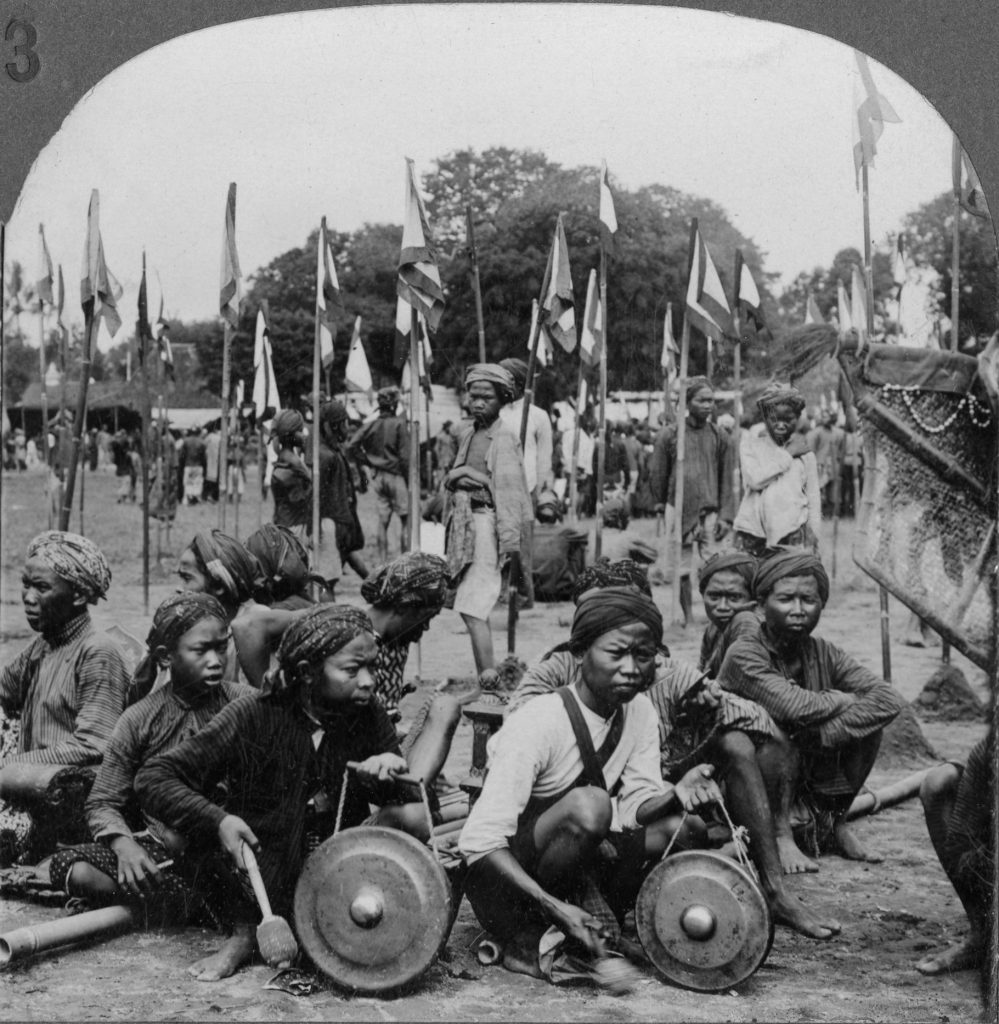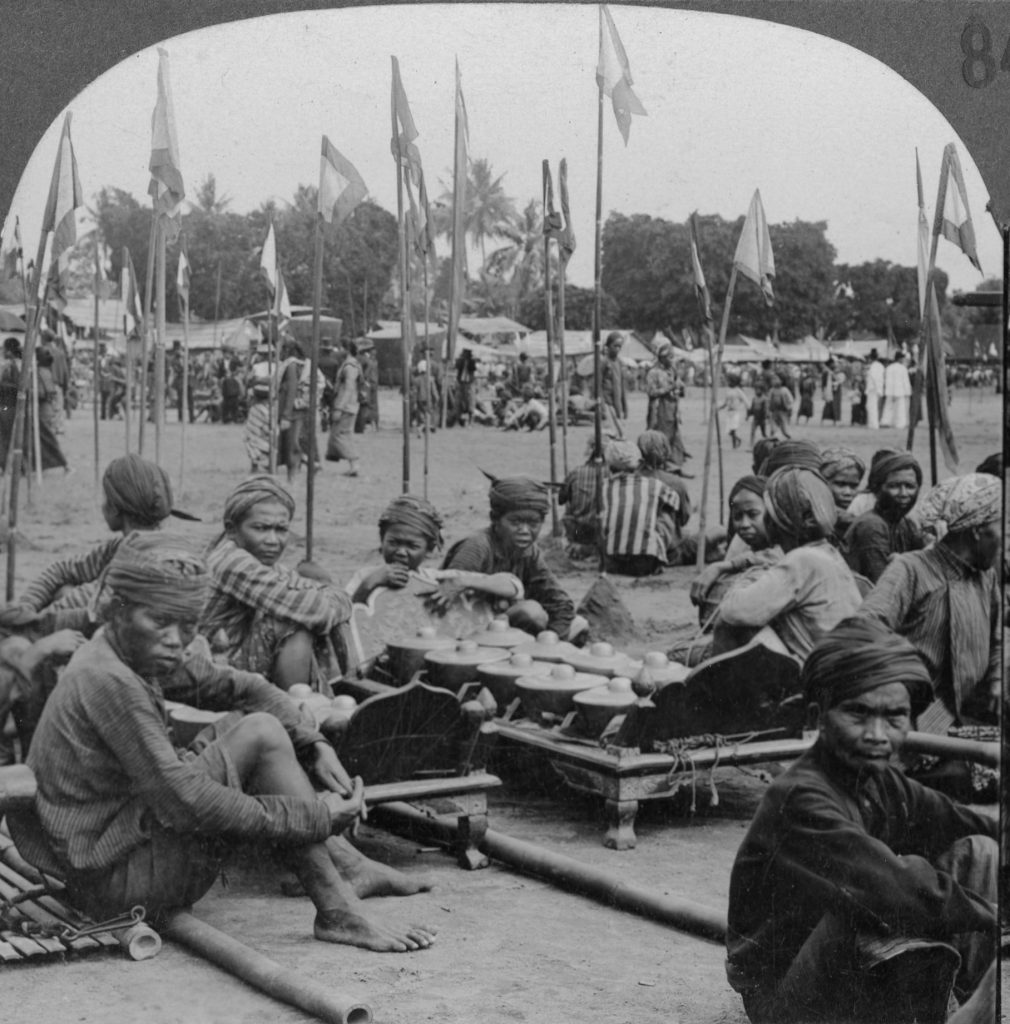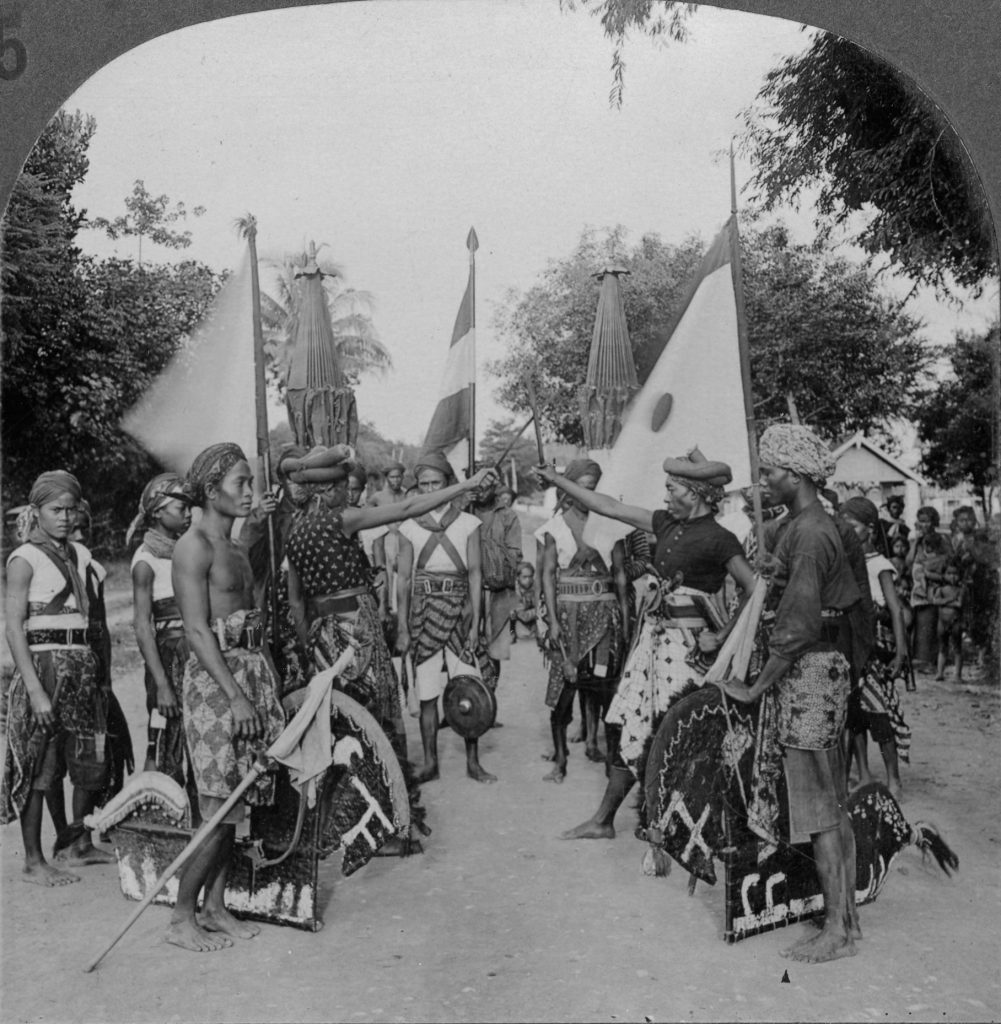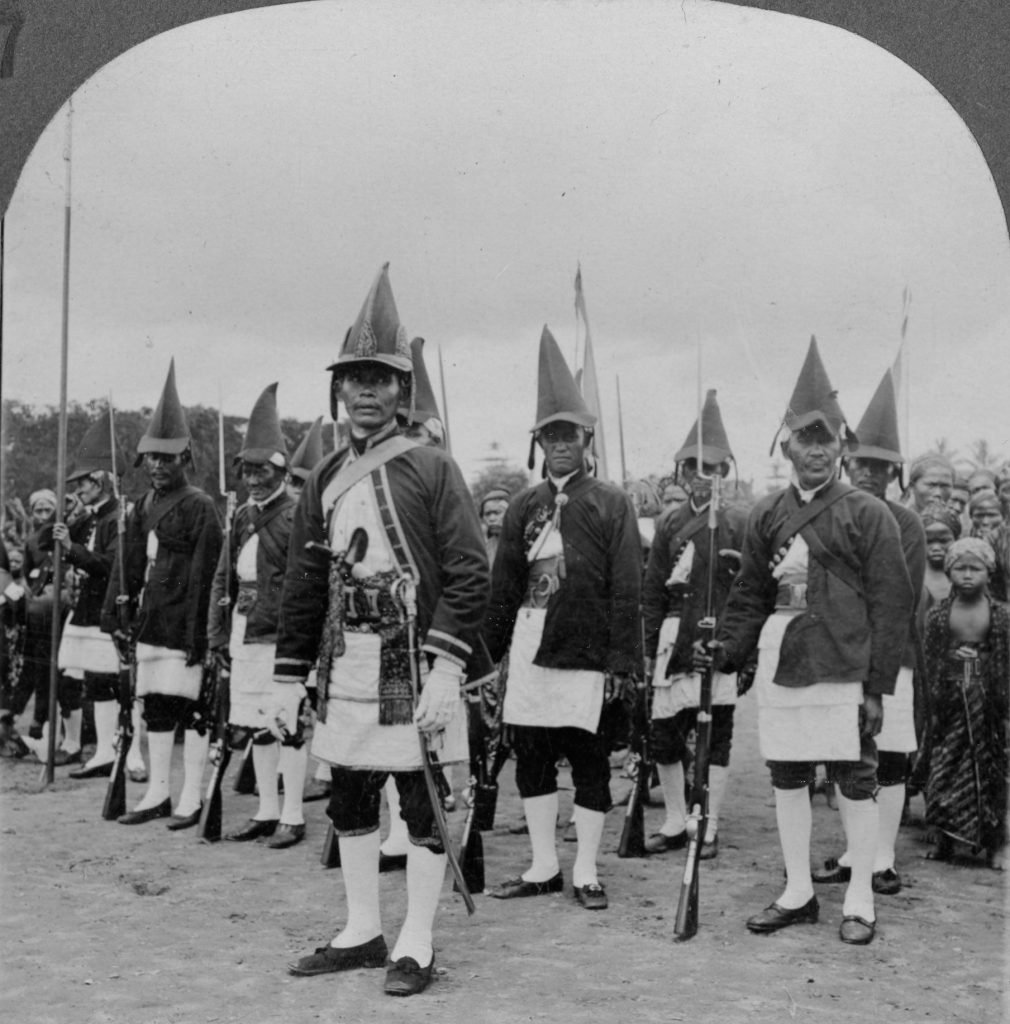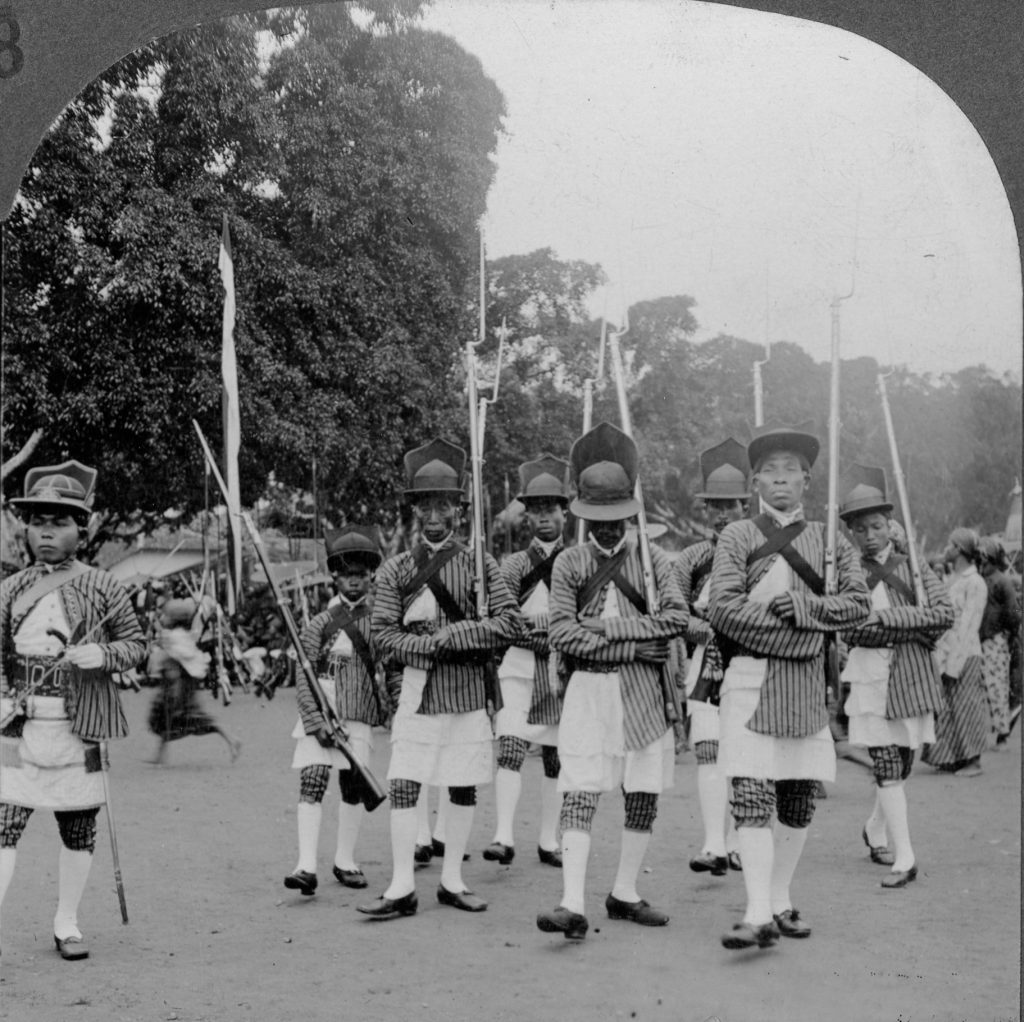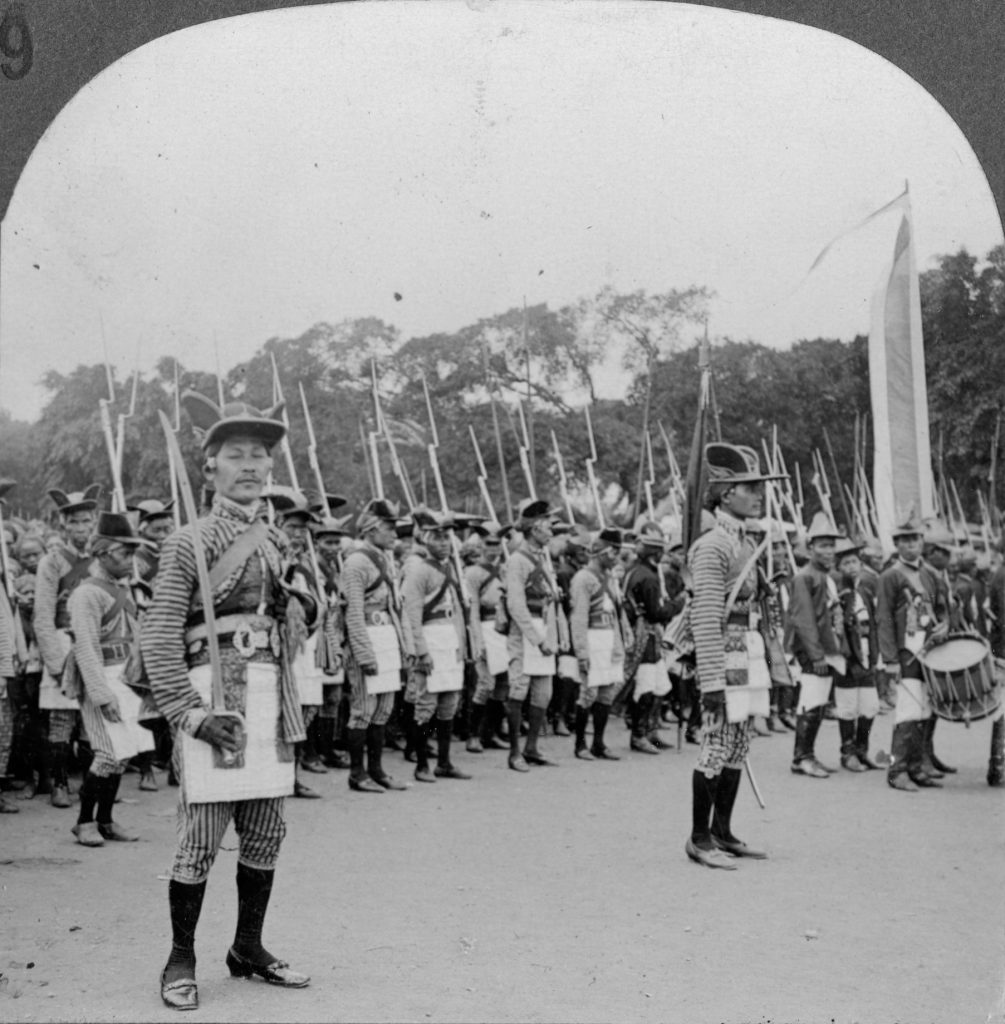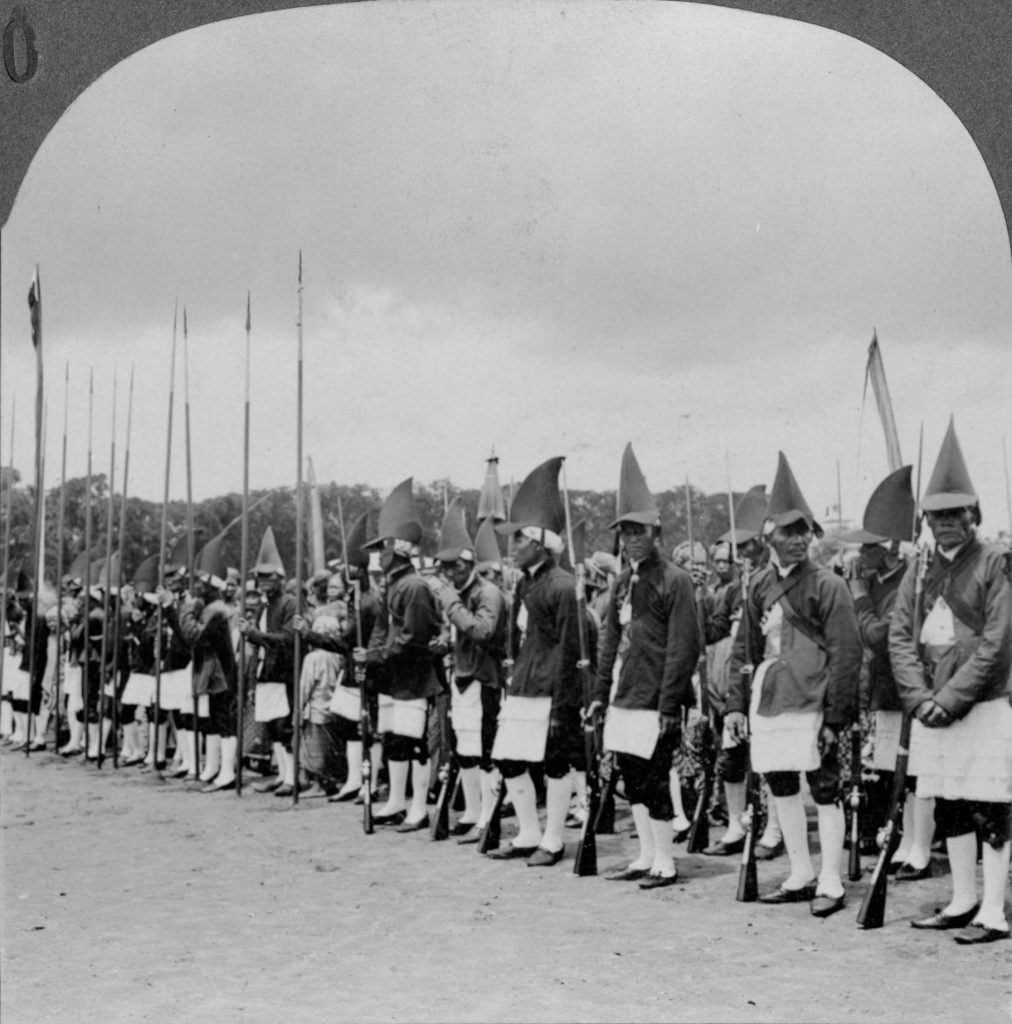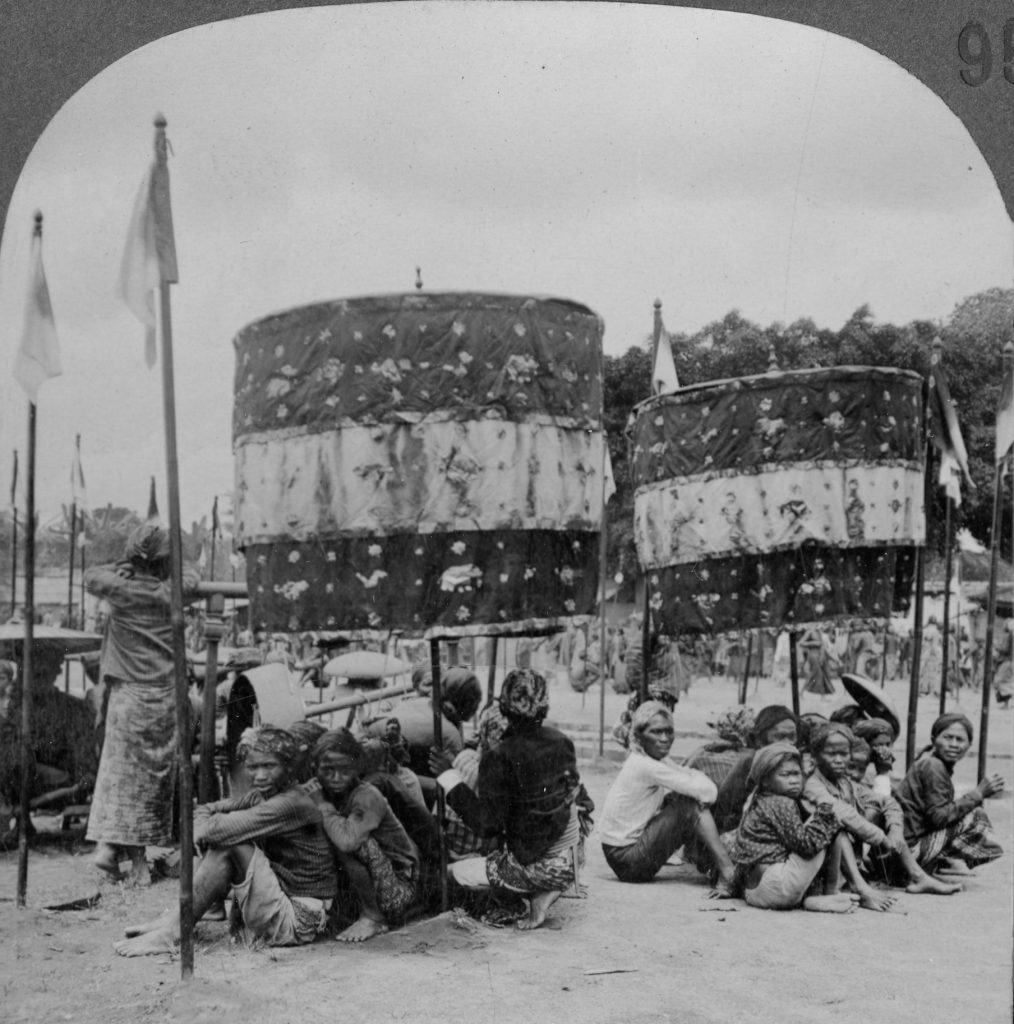Sometime during the early 20th century the Keystone View Company of Meadville, PA, (active 1892-1964) released a “Java” stereoview set of one-hundred 3-D images. I have procured a number of these, including a dozen stereoviews (#83-#93 and #95 from the set) taken in Yogyakarta during a grebeg. I am quite confident in dating the event documented in these images as having taken place no later than 1902. I possess the same image as seen on Stereoview 9 (#89 in the Keystone set) on a card by The Universal Photo Art Co., which was in business between the early 1880s and about 1910. The Universal card has printed under its caption “Copyright 1902 by C. H. Graves,” who was the owner of Universal. As best as I can surmise, the series of images seen on this page were first published by Graves’ Universal Photo Art Co. as part of a 100-view Java set that was later purchased and reissued by the Keystone View Company (Keystone bought Universal’s negatives sometime between 1912 and 1922 after the latter company folded). Three of the images seen on this page (Stereoviews 7, 9 and 12) also appeared in Keystone’s “World Tour” box sets of varying sizes.
The grebeg pictured in these stereoviews would appear to be a Grebeg Mulud. I say this because of the image on Stereoview 10 (Java set #92), in which is pictured certain objects and actors that at the time participated only in this one of the three yearly grebeg.
Beneath each image the following material is presented: the card number in this gallery of images; in brackets, the card number in the 100-card set and its 5-digit negative number; in bold typeface enclosed in quotation marks, the caption for the image as printed on the view card; and my description and/or interpretation of the image and what it illustrates about the grebeg tradition as practiced in Yogyakarta.
I would like to thank Professor Christopher Jones, Grinnell College Special Collections Librarian and Archivist of the Collegee, and his staff for executing the high-resolution scans of the original stereoviews so that they could be included on this site.
Gallery
- [#83; 25783] “The Javanese Idea of a Gloriously Good Time, Djokjakarta, Java.” Two boys holding kempul posed in front of gamelan instruments (which probably belong to the set pictured in Stereoview 2) on the Alun-alun Lor. The boys are probably members of a kudha képang group such as the one pictured in Stereoview 3.
- [#84; 25784] “Javanese Musicians at the Native Festival, Djokjakarta, Java.” Part of a gamelan sléndro (left to right: bonang panerus, bonang barung, and part of a saron; this latter instrument is the same one seen at the far left of Stereoview 1) located on the Alun-alun Lor. Bamboo poles and platforms used to transport the gamelan are visible. It is very likely this gamelan belongs to a high ranking palace official, such as a regent, who administered a district of the Sultan’s realm (perhaps the two individuals featured in Stereoview 3 are regents, as their outfits suggest). At this time (the turn of the 20th century) it was common for regents to camp out, along with their gamelans, in the Alun-alun Lor for Sekatèn and for the three yearly grebeg.
- [#85; 25785] “A Group of Javanese Dancers at a Native Festival, Djokjakarta, Java.” A kudha képang trance dance troupe poses on the road that encircles the Alun-alun Lor. Such groups would come into the city from the countryside to entertain revelers attending the grebeg festivals in the Northern Square. Regents within the palace administration would also be allowed to support such a group, who would accompany them to the grebeg festivals (Poeroebaja 2003, p. 261). Groneman (1895, p. 15) and Poeroebaja (2003, p. 242), and Resink-Wilkens (2003, p. 87) all mention this tradition, which early in the reign of the Ninth Sultan ceased to be practiced.
- [#86; 25786] “Djokjakarta Policemen in Uniform, Java.” These are not policemen. Their uniforms (including their fezzes), the presence of a prestige-signaling parasol (payung), and the gong ageng and kempul of a gamelan behind them suggest they are high-ranking palace administrative officials such as regents.
- [#87; 25787] “Bodyguard of the Sultan, Djokjakarta, Java.” Members of the bregada prajurit (palace military brigade) Wirobrojo are seen lined up on the Alun-alun Lor.
- [#88; 25788] “Fantastic Dance of the Sultan’s Bodyguard, Djokjakarta, Java.” Members of the bregada prajurit (palace military brigade) Mantrijero are seen parading on the Alun-alun Lor.
- [#89; 25789] “The Javanese Enjoy Stepping to Music, the Sultan’s Bodyguard, Djokjakarta, Java.” Members of the bregada prajurit (palace military brigade) Jogokaryo are seen lined up on the Alun-alun Lor. At the far right of the image can be seen one of the instruments of the unit’s band, a field drum (tambur). For a complete view of this unit’s band see the Prajurit film on this website, between 6:56 and 8:37.
- [#90; 25790] “A Favorite Amusement of the Sultan’s Bodyguard—Dancing, Djokjakarta, Java.” Members of the bregada prajurit (palace military brigade) Wirobrojo are seen lined up (not dancing) on the Alun-alun Lor.
- [#91; 25791] “A Procession in the Sultan’s Realm, Djokjakarta, Java.” Five of several offerings (gunungan) presented by the Sultan to his subjects as they are carried through the Alun-alun Lor toward the Mesjid Ageng. There they are blessed before being torn apart by the public. In the foreground is a gunungan lanang (“male” mountain), and to its left are one small gunungan pawuhan (“refuse” mountain), a gunungan dharat (“land” mountain), a gunungan wadon (“female” mountain), and a second gunungan dharat.
- [#92; 25792] “Grotesque Eunuchs of the Sultan’s Household, Djokjakarta, Java.” Pictured here is probably the two palace officials called Pralata and Citra Lata (both wearing long garlands and standing under status-signaling parasols, or payung) along with a rebab (carried by an official, in the center of the image) also under a payung, and at least three other important individuals or objects as marked by the other three payung visible in the picture. Groneman (1895, pp. 33-34) describes Pralata and Citra Lata as the heads of the two “kampung tlèdhèk” (“dancing-girl slums”). They apparently improvised a mock, comical duel as they danced in front of the pusaka gamelan sekati K.K. Nagawilaga as it was carried in the Grebeg Mulud procession (see Plate XXIII in Groneman 1895). What the meaning of this unusual pairing was (it is no longer practiced) I know not. Groneman (1895) describes (p. 32) and pictures (Plate XX) the carrying of a pusaka drum and rebab in front of the gamelan K.K. Guntursari during Grebeg Mulud processions. It is unclear to me if, in the scene depicted in this stereoview, a gamelan follows Pralata/Citra Lata and the sacred rebab, and, if one does follow them, which gamelan it might be—K.K. Nagawilaga or K.K. Guntursari.
- [#93; 25793] “Entrance to a Temple in Djokjakarta, Java.” The entrance to the Mesjid Ageng of Yogyakarta. On the other side of this gate, at either end of a long and narrow courtyard, are located the two pagongan (gamelan buildings) in which the gamelan sekati are located and sounded during Sekatèn.
- [#95; 25795] “Natives at a Festival in Djokjakarta, Java.” Pictured in this stereoview are two songsong agung set up on the Alun-alun Lor during a grebeg. These parasols with extra-long edges of cloth signal the high position of their owners within the palace social and administrative hierarchy (the people crouched beneath them in the picture are not the owners of the parasols). Only the Sultan, the Crown Prince, each office of the palace government, and the regent of each administrative district of the realm can own and display the appropriate number and color of songsong agung associated with their position (Poeroebaja 2003, pp. 261-264). Most songsong agung have three broad bands, as do the ones pictured here, of varying colors, each combination of colors being specific to the individual or office that owns them. The two songsong agung pictured in this stereoview most likely belong to a regent who also brought along one of his gamelans (the gong rack and gong ageng of which can be seen behind the left parasol). The palace-sponsored wayang kulit performance that marks the end of each grebeg—Bedhol Songsong—is named after the tradition of pulling up the many songsong agung displayed in the Alun-alun Lor before and during a grebeg at its conclusion.


